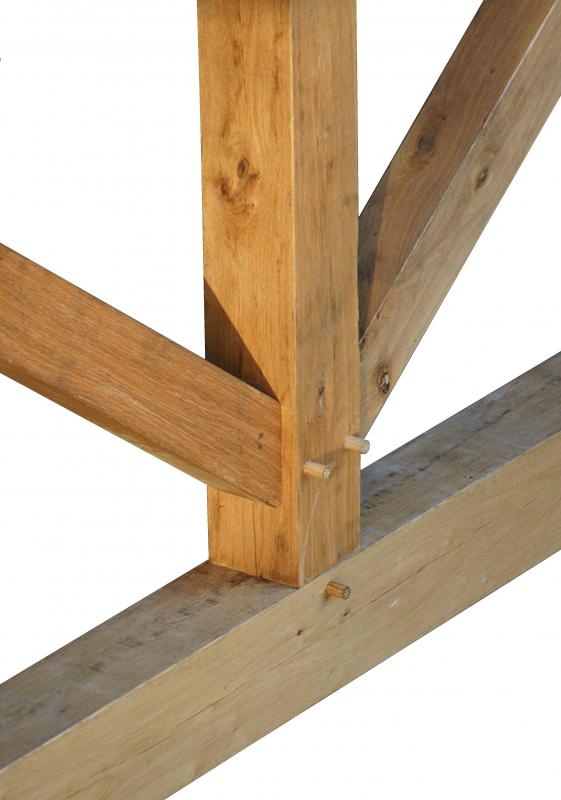At HomeQuestionsAnswered, we're committed to delivering accurate, trustworthy information. Our expert-authored content is rigorously fact-checked and sourced from credible authorities. Discover how we uphold the highest standards in providing you with reliable knowledge.
What is a Mortise and Tenon Joint?
A mortise and tenon joint is a type of joint used to join two pieces of wood together. To make this joint, a joiner will cut a hole, called a mortise, out of one piece of wood. A projection, called the tenon, is then cut out of the second piece. After this, the joiner will insert the tenon into the mortise. The result is a strong joint that can be used in many applications.
Joiners can use the mortise and tenon joint in furniture making. It is also used in frame construction when a strong joint is needed. The reason this joint is so strong is because it has a large mating area to which glue can be applied. In addition, a wedge can be inserted into the the tenon to keep the it from falling out of the mortise. A joiner can also use dowels to secure this joint.

The mortise and tenon joint can either be through or blind. If it is a through joint, the mortise is cut through to the other side of the wood. Thus, when the tenon is inserted it is visible through the mortise. This joint can be secured by dowels or wedges. In either case, the fasteners are put in place after the joint has been put together.
A blind tenon is also called a stump or stump tenon. In this joint, the mortise is only cut partway into the wood. Therefore, the tenon cannot be seen when it is inserted. Like the through version, a blind mortise and tenon joint can also be secured using dowels or wedges. In order to measure the length the mortise needs to be, joiners can place a gummed stamp paper on the side of the chisel to mark the desired length. This allows the joiner to know how deep to cut the mortise without having to stop to measure.
A haunched tenon is used in making doors and, like a through tenon, projects all the way through the wood. It is similar to the regular joint, except there is an extra shoulder, or "haunch," on the tenon. The mortise is cut accordingly with an extra recess so that it is able to accept the haunch. In a haunched joint, the haunch should not be more than a fourth of the length of the tenon. If the haunch is cut to the same length and height, it is called a square haunch.
There are other variations of the mortise and tenon joint, two of which are the double tenon and the twin tenon. The double tenon is used on timbers that are wide. This variation features two or more tenons next to each other and a mortise cut to receive them. A twin tenon is used when the tenon rail is comparatively wider than its thickness. This variation has two tenons attached by a haunch that is inserted into a mortise cut accordingly to receive it.
AS FEATURED ON:
AS FEATURED ON:











Discussion Comments
I need some guidance on mortise and tenon work for some Mission-style furniture I want to work on, including end tables, Prairie-type chairs and maybe some other pieces. Do loose tenons work OK for such work? What about using routed mortises? And is a router like MortisePal something viable? Any insights into this particular type of work would be greatly appreciated.
Post your comments